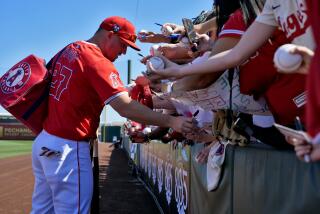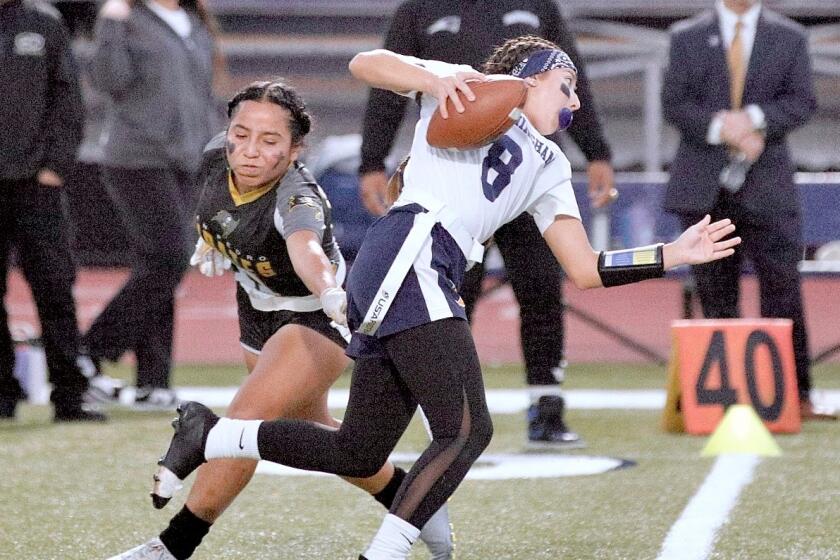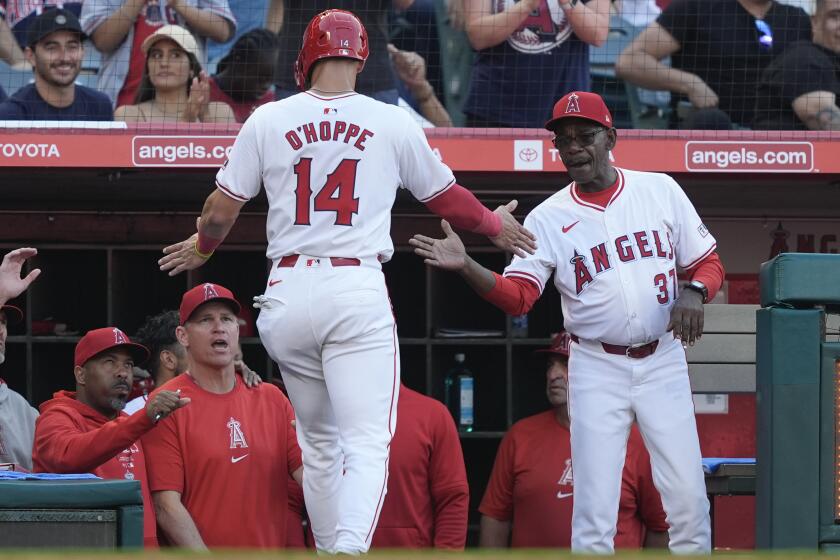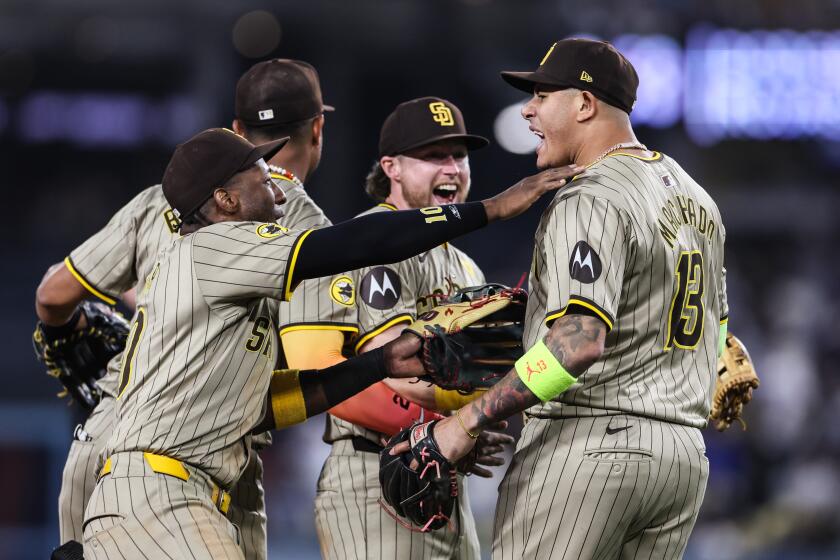It’s not the same old ballgame at spring training
Sometime soon, Phil Niekro plans to make his way from his home outside Atlanta to the Braves’ spring-training site near Orlando, Florida, where he’ll watch a little baseball, play a lot of golf and, as he does every year, throw some batting practice.
Niekro is 72, but he can still lob it in there. Besides, age doesn’t really matter since anybody who has ever picked up a baseball feels young again when spring training rolls around.
Even a man who reported to his first camp more than half a century ago.
“I think everyone enjoys spring training,” the Hall of Fame member said. “That’s the fun time of year.”
The rites of spring have changed drastically since Niekro’s rookie year.
Where the majority of teams were once based in Florida, half are now around Phoenix. The training complexes, once little more than a single pot-holed field of yellow grass, now sprawl over several acres, housing up to a dozen immaculate diamonds. And while the fans are more plentiful — and spending considerably more money — the workouts are actually shorter.
Yet, despite all that, when 20 of the 30 major league teams welcome pitchers and catchers back this weekend the most noticeable change between then and now will be the players themselves.
“The guys today are in much, much better physical condition than we were,” Niekro said.
The reason has nothing to do with the spring and everything to do with the winter.
Players now “stay in shape the whole year around,” former Dodgers outfielder Al Ferrara said. “They know about diet. Our diet was a pizza and a beer. We came into spring training basically out of shape and worked ourselves into shape.”
And, in more than a few cases, worked themselves into sobriety too.
“The drying-out period for a lot of us was also part of the action,” Ferrara said. “But that was the day. And that day was a lot different than it is today.”
Ferrara, who played for the Dodgers in the 1960s, was one of the few players from that era who showed up ready to go each spring, partly because he spent the winters playing in Latin America.
The economics of the time forced many players to hold down some kind of off-season job. Former Pittsburgh Pirates infielder Richie Hebner dug graves in the winter. More typical was the experience of former Dodgers outfielder Tommy Davis, who worked for a Brooklyn department store.
“We didn’t do very much in the winter,” Davis said. “And we came down and got in shape. We didn’t have a lot of [winter] injuries. It’s tough to get injuries when you’re drinking beer.”
All that changed with free agency, which drove the average salary from $29,303 in 1970, Ferrara’s final full season, to more than $3.34 million last season. The big league minimum salary will rise this season to $480,000.
As a result, players can afford to hire nutritionists and personal trainers or attend winter workout camps.
“There was nothing like that,” Niekro said. “I kept myself in shape in the off-season by playing ping-pong. In ping-pong you’ve got to have real quick feet and good hand and eye reflexes. So I really worked on that a lot.”
If that sounds funny, remember this when some chiseled superstar is sidelined on opening day because of an injury: Wintering in a department store, Davis hit .294 and averaged 118 games per year over 17 seasons. Ping-pong training resulted in Niekro throwing more career innings than any pitcher in the last eight decades.
“At some point along the line, people realized … they had to come in in shape in order to compete,” said Stan Conte, the Dodgers senior director of medical services. “More people were getting into the gyms and then teams started developing strength and conditioning programs that extended into the off-season.
“[But] we still have a lot of the same injuries that we’ve been seeing over the years in spite of advancements in our strength and conditioning programs.”
One reason for that, Conte said, is that while winter workouts build muscle, endurance and improve overall fitness, few mimic the kind of movements baseball requires.
“The objective is actually to run the bases, throw the ball, pitch the ball and hit the ball,” he said. “And the best way to do that is to actually to do those [things].”
Which is why nearly three dozen Dodgers pitchers will show up for the first day of spring training Tuesday fresh off a team mini-camp last month. The Dodgers are one of several teams who now keep close tabs on their top players all winter, allowing them to both identify potential injury problems as well as make better use of their six-week spring training.
“In the old days, a lot of times a coach or a trainer would not put his eyes on a player from September until February,” Conte said. “Now … we probably put our hands on about 120 to 130 players in the off-season, physically seeing them.”
If all that has made the participants more fit and better players it hasn’t made the spring-training experience any more fun. Hall of Fame pitcher Ferguson Jenkins, who played with the Harlem Globetrotters during a couple of off-seasons, argues the point.
“The biggest thing is, we had roommates back then,” said Jenkins, who attends about 30 spring-training games in Arizona each year. “Guys hung around the hotel pool, talked to the fans and kibitzed with each other. You had card games, things like that.
“You don’t see that now. When [practice] is over, these guys are gone to a country club to play golf.”
Said Niekro: “It’s more of a business right now.”
A big business.
The 15 major league teams that train in Florida generated an average of $47 million in economic activity in 2009, said Nick Gandy, director of communications for the Florida Sports Foundation. And in 10 of the last 12 springs, the Grapefruit League has drawn more than 1.5 million spectators.
The 15 teams in Arizona had a combined attendance of nearly 1.6 million last year, contributing an estimated $360 million to the state’s economy.
This, from such humble beginnings. Although the exact origin is unknown, spring training probably dates to 1870 when the Chicago White Stockings and Cincinnati Red Stockings prepared for the season in New Orleans.
The idea took a while to catch on, though, and it wasn’t until 20 years later that teams regularly began scattering to the south and west each spring, financing the trips with barnstorming games at stops along the way.
By 1910, teams were rescuing their players from the snowbound Midwest and Northeast, sending them to places like Hot Springs, Ark., Tulsa, Okla., — even California, which played host to as many as four teams each year beginning in 1903.
The main point then was the same as it is now — preparation.
“Baseball is not a real physical game when you get right down to it,” said Hall of Fame manager Earl Weaver, who won a World Series title with the Baltimore Orioles in 1970. “We did a certain amount of calisthenics. [But] you’re thinking about doing your fundamentals.
“Because once the season starts, you’re not going to be able work on too many things.”
More to Read
Go beyond the scoreboard
Get the latest on L.A.'s teams in the daily Sports Report newsletter.
You may occasionally receive promotional content from the Los Angeles Times.











